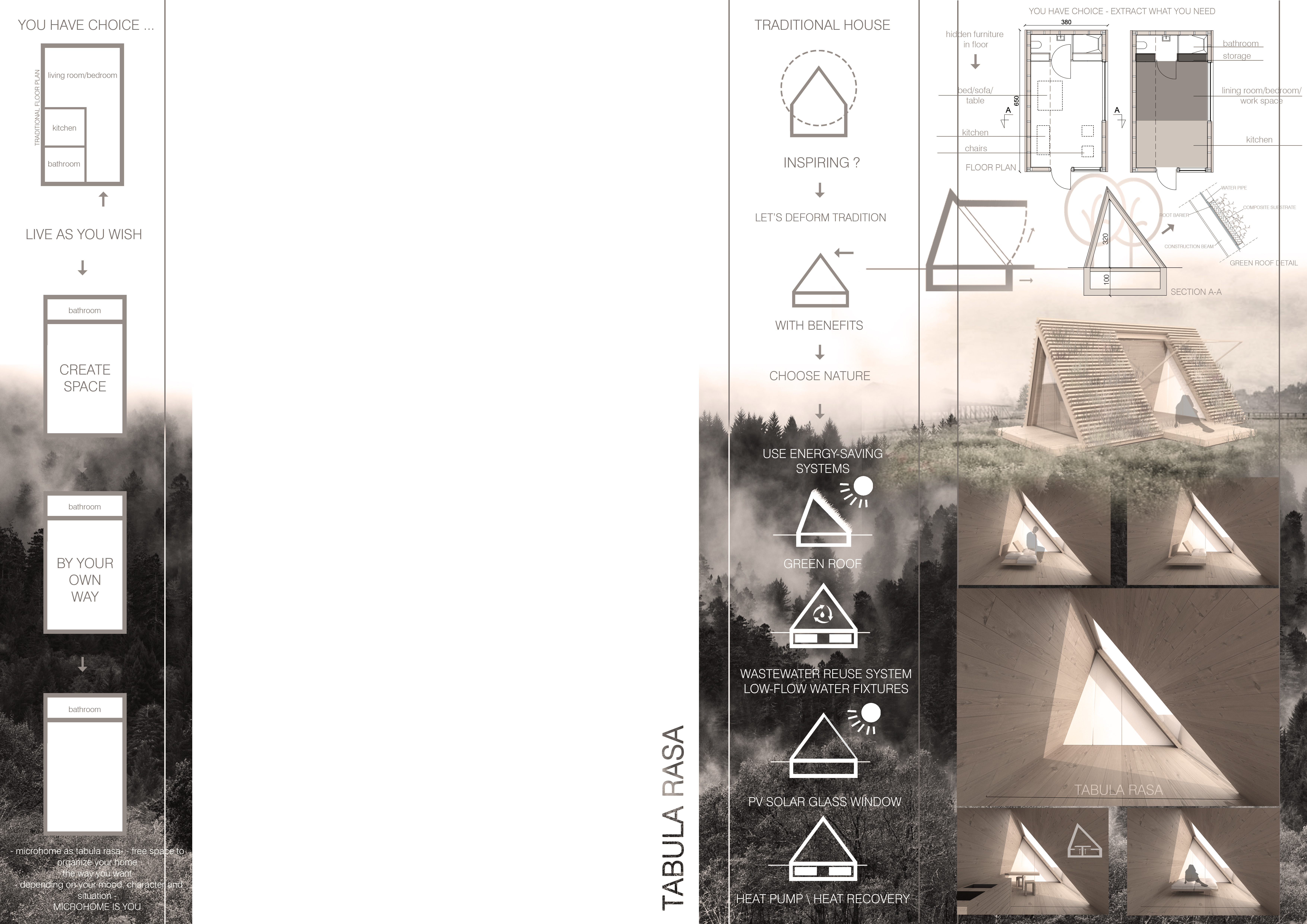5 key facts about this project
The architectural design presents an innovative microhome concept that rethinks traditional residential layouts. Located in a modern urban setting, the idea is to create adaptable living spaces suitable for contemporary lifestyles. The design focuses on personalization, allowing residents to arrange their homes according to their own needs and preferences. Flexibility is at the core of this concept, addressing the challenges of modern living.
Flexibility in Layout
The layout features a traditional floor plan with clear areas such as a living room/bedroom, kitchen, and bathroom. However, it smartly incorporates hidden furniture underneath the flooring, creating a neat and uncluttered environment. This clever use of space maximizes utility and aligns with current architectural trends that emphasize multifunctional living in small areas.
Sustainable Practices
Sustainability is an important part of the design philosophy, integrating energy-efficient systems that encourage eco-friendly living. Key features include a green roof that not only supports local biodiversity but also improves thermal insulation. A wastewater reuse system is also included, helping to conserve water and lessen environmental impact. Low-flow water fixtures are used to further enhance water efficiency throughout the home.
Energy Efficiency
Energy efficiency is improved with the use of photovoltaic solar glass windows. These windows capture sunlight to generate energy while allowing natural light to brighten the interiors. This design choice helps reduce dependence on conventional energy sources and lowers overall energy expenses. Additionally, a heat pump heat recovery system is implemented to provide effective climate control while keeping energy use low.
The microhome showcases a practical approach to sustainable living, allowing occupants to adapt their spaces to their daily activities. This design reflects a balance between practical needs and environmental awareness, with an emphasis on how small choices can lead to larger impacts. The thoughtful integration of function and sustainability results in an everyday living environment that aligns with the realities of modern life.




















































